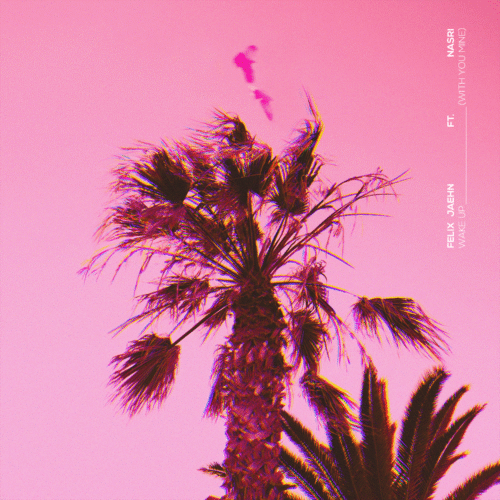In the fast-moving world of electronic music, collaboration isn’t just a creative bonus — it’s a career booster. Whether you’re teaming up with another producer for a dancefloor banger or swapping stems across continents for a cross-genre experiment, the right tools and workflow can turn a chaotic collab into a smooth, productive partnership.
Here’s your no-nonsense guide to the best tools, practices, and etiquette for successful EDM collabs in 2025 — including some new tech that’s changing the game.
The Right Tools for the Job
Modern EDM collabs often span time zones and DAWs. Thankfully, the latest tools make syncing projects and staying aligned easier than ever.
1. Cloud-Based DAW Syncing
Audiomovers Listento 2.0: Stream HQ audio directly from your DAW to your collaborator in real time. Ideal for mix feedback or live sessions.
Ableton Cloud Sync / Bitwig Sessions: Both offer version control and real-time collaboration tools baked into the DAW. In 2025, even FL Studio has caught up with its own cloud collaboration beta.
Kiffix Sessions (Beta): Emerging platforms like KIFFIX are testing integrated session sharing, allowing collaborators to track progress, upload stems, and leave timestamped feedback.
2. Stem & File Management
Splice Projects 3.0: Still going strong in 2025, Splice allows shared folders with version tracking, ideal for managing stems and MIDI files across different DAWs.
Wavetable.io: A newer platform designed specifically for EDM producers, offering stem previews, project notes, and BPM/key auto-tagging.
3. Virtual Jam Rooms
Endlesss: Real-time collaborative jamming via loops, now with VST integration and direct export to DAWs. Great for idea generation.
Satellite Plugins: A DAW plugin suite that lets collaborators drop MIDI/audio directly into a shared project across platforms. 2025 updates now support full tempo-sync and shared plugin chains.
Workflow That Doesn’t Suck
Even with the right tools, collaborations can fall apart if the workflow isn’t clear. Use this framework to keep things smooth:
Step 1: Set Creative Boundaries Early
Decide upfront:
- Who’s doing what (sound design, arrangement, mixdown, vocals)?
- What genre or vibe are you aiming for?
- Is this a one-off project or part of a bigger release?
Step 2: Define the Timeline
- Map out milestones
- Idea sketch deadline
- First draft
- Feedback loop
- Final mix + mastering
- Marketing prep
- Use a shared board (Notion, Trello, or even KIFFIX if you’re tracking multiple projects).
Step 3: Share Smart
Use clearly labeled stems, keep things organized by section (Drums, FX, Leads, Bass), and always bounce stems with tails. Nothing kills a collab vibe faster than receiving a jumbled stem folder called “New Sh!t V4 FINAL 2.wav”.

Collab Etiquette for 2025
Even great music can fall apart with poor communication. Here are some hard-earned etiquette rules:
- Overcommunicate creatively, under-communicate emotionally. Be honest with ideas, gentle with critique.
- No ghosting. If you’re swamped or need a break, say so. Silence kills momentum.
- Credit everyone. Even if someone just did the riser, list them.
- Leave your ego at the door. It’s not about who’s “better” — it’s about what makes the track bang.
Don’t Skip the Business
Music collabs are part friendship, part business. If things go well, you’ll be dealing with royalties, splits, and maybe even label contracts. Protect yourself – use a Split Sheet.
At the very least, agree in writing on:
- Song title
- Contributors
- Contribution percentage (for publishing and royalties)
- Who owns the master
- Free templates are available online, or better yet, use SplitPay.io or Songtrust to automate the process.
Once the track is final:
- Register with your local PRO (e.g., ASCAP, BMI, PRS)
- Get an ISRC code (via DistroKid, Tunecore, or your label)
- Submit metadata for all contributors
These steps ensure everyone gets paid — and avoid future legal drama.
Marketing as a Team
Once the track is done, the work isn’t. Sync your marketing push:
- Create a joint teaser campaign (short clips, track artwork, behind-the-scenes)
- Stagger the content (one person drops the preview, the other shares the studio clip)
- Use joint features on Spotify, SoundCloud, and Reels/TikToks
Platforms like KIFFIX help you track engagement, analyze performance, and schedule posts across both profiles — making your joint release feel twice as powerful.
Final Drop
Collabs in 2025 can be magical or messy. With the right toolkit — from smart cloud syncing to simple split sheets — you can stay in flow, protect your work, and make music that blends strengths instead of egos.
So next time you get that “let’s collab” DM, say yes — but come prepared. The banger deserves it.
UFO Network brings you music news daily! See more news here









